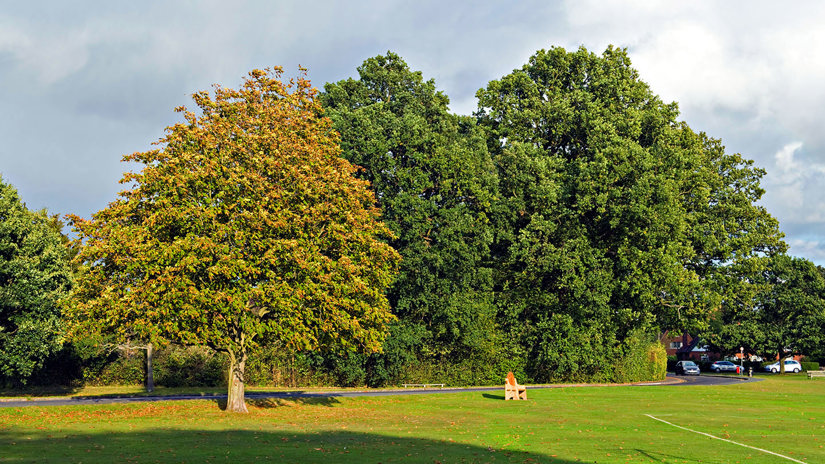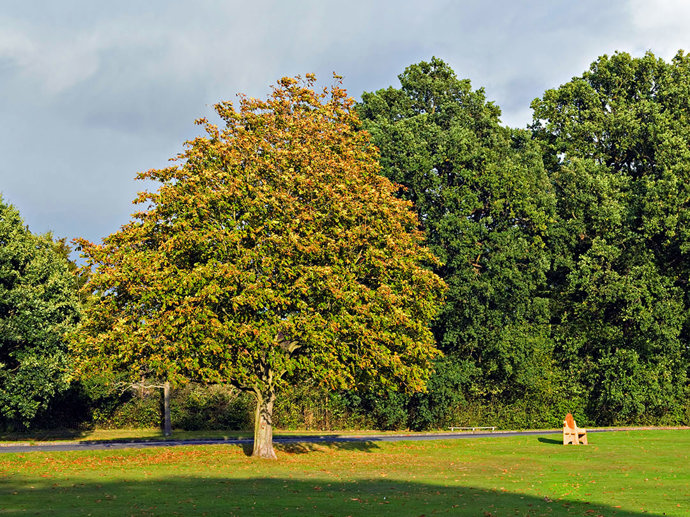Common name: great spruce bark beetle
Scientific name: Dendroctonus micans
What does it affect?: Sitka spruce, Norway spruce, oriental spruce
Areas affected so far: UK excluding Northern Ireland and Western Scotland
Origin: Siberia
The great spruce bark beetle damages spruce trees by tunnelling into the bark. This pest was accidentally introduced into the UK in 1982 and now has become established in Western England, Wales and Southern Scotland.
Common name: great spruce bark beetle
Scientific name: Dendroctonus micans
What does it affect?: Sitka spruce, Norway spruce, oriental spruce
Areas affected so far: UK excluding Northern Ireland and Western Scotland
Origin: Siberia
Symptoms include:
The great spruce bark beetle is one of the largest bark beetles. Adults are 6-8mm long and up to 3mm wide. In the UK, the beetle has a long life cycle, ranging from 12 to 18 months. It begins when adult beetles tunnel into the bark of living trees to lay eggs. When they hatch the larvae excavate feeding tunnels and galleries.
If the infestation gets too large and the stem becomes girdled, a wound which means the tree can no longer transport energy from photosynthesis or water from the roots, everything above the wound will ultimately die. This is particularly harmful if the main trunk is girdled.
This non-native beetle now affects trees in western England, Wales and southern Scotland. It’s widespread across Europe and Asia.

Credit: Martin Jukes / Forest Research
The beetle was first discovered in the UK in 1982 although evidence has now been found that it could have been here as early as 1973, though we don’t know how it arrived. In 1996 an outbreak site was discovered in Kent leading to the realisation that its range had spread from the west of the country.
One way it might have made its way to the UK is through the movement of untreated wood from infested sites in Europe and Asia. The larvae can live concealed inside infested wood and remain undetected until after transportation.
At temperatures of between 12°C and 20°C adult beetles move within and between trees by crawling, but when temperatures reach 22.5°C they are able to fly. Increasing temperatures through climate change might lead to increased spread of this beetle in the UK.
It causes significant dieback of trees but its effects can be made worse when other stress factors, like drought, are affecting the trees. It can take a few years of sustained attack to kill trees.
That said, this pest is currently kept under control using an introduced predatory beetle from its home range of Siberia called Rhizophagus grandis. This form of biological control has produced great results and is even effective if there are just a few great spruce bark beetles in a woodland. The Rhizophagus grandis will find them!
In the UK, an area in the west of Scotland has now been designated as a pest free area. It is regularly surveyed by Scottish Forestry as part of its ongoing programme.
To combat pests and diseases like the great spruce bark beetle we have:


We are fighting back against pests and diseases. Find out what we're doing to prevent the spread and protect the UK’s trees.
More pests and diseases: